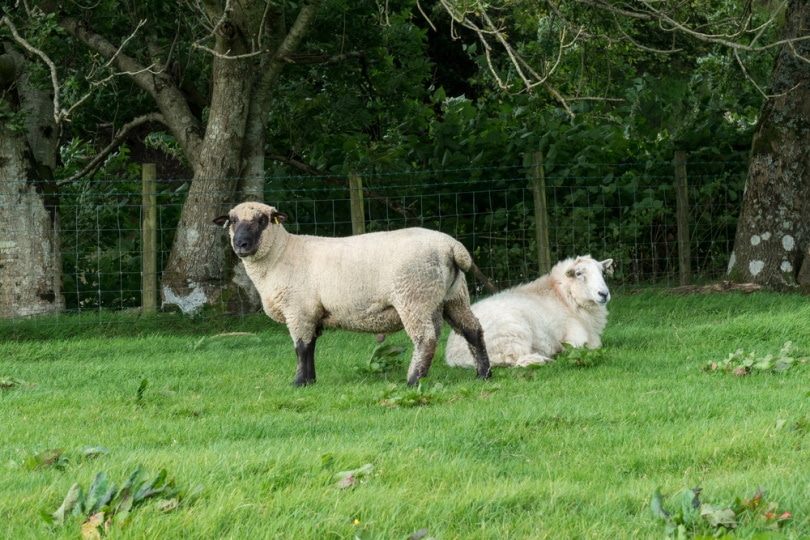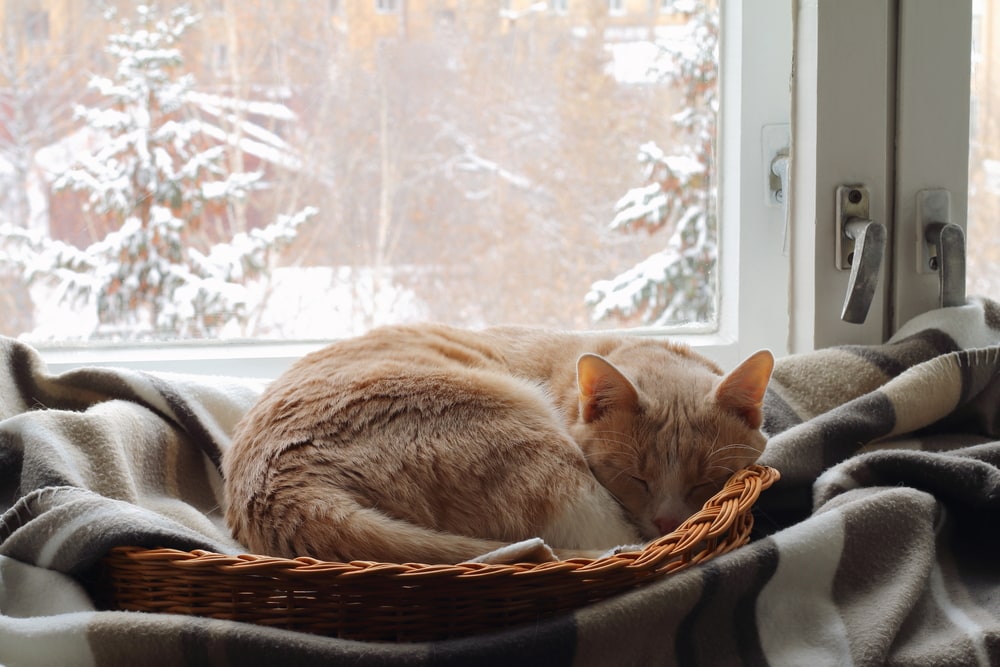
Humans and sheep have been closely linked for more than 10,000 years since the ruminant was first domesticated. There are more than a billion domesticated sheep on the planet, and half a billion1 are sent to the slaughterhouse every year to produce meat for consumption. We also still use the fleece of sheep to create wool which, in turn, is used in the manufacture of clothes and other textiles. So, let’s learn more about how sheep became domesticated and turned into the animals we know today.
How and When Were Sheep First Domesticated?
Recent digs have found evidence2 that sheep were first domesticated 11,000 years ago. Remains show that wild sheep were fenced in the middle of the village, thereby preventing the sheep from escaping and giving the farmers easy access to them. However, these were still wild sheep, which are recognizable for their larger size.
Remains from approximately 800 years later (10,200 years ago) show that farmers were killing more sheep than other species of animal and that they were more choosy about the size and sex of the animal they were killing.
From there, specific breeds of sheep are believed to have been bred with one another to encourage desirable dominant traits, such as docility and high production of meat and fleece. Another 700 years later, or 9,500 years ago, there are signs that sheep were being farmed (i.e., they were being herded).
The studied remains were found in Turkey, which is where it is believed that sheep farming and domestication first originated. Today, sheep are farmed all around the world and for a variety of purposes.

Top 5 Facts About Sheep Domestication
Sheep were starting to be domesticated 10,000 or more years ago and were becoming domesticated 9,000 years ago. Since then, they have become one of the world’s most common food sources while also providing warmth, in the way of clothes, and comfort, in textiles and other fabrics used for a wide variety of purposes. Facts about sheep domestication include:
1. There Are More Than a Billion Sheep in the World
The world has a population of fewer than 8 billion people and there are more than a billion domesticated sheep around the globe. China has the most sheep with a population of nearly 200 million or approximately 15% of the total global population.
Australia, which is renowned for its sheep farming, has the world’s third-largest population of approximately 75 million heads. However, it is Australia that produces the most fleece of any nation.
Although New Zealand’s population isn’t as high, it has one of the highest per capita populations, with the equivalent of more than five sheep to each person in the country.

2. There Are 900 Domestic Breeds of Sheep Globally
There are 900 breeds of domestic sheep in the world, with more than 50 found in the U.S. Different breeds have different properties and uses.
The Merino sheep, which is one of the most popular breeds in the world, is prized for its high-quality fleece, which is used for the production of clothes.
The Turcana, which is especially popular in countries like Romania and Ukraine, is something of an all-rounder. As well as being a hardy sheep, it has good meat, milk, and wool production.
3. Half a Billion Sheep Are Killed Every Year for Food
Surprisingly, sheep is only the fourth most popular animal meat in the world. Pork is the most popular and consumed by more than a third of the people in the world. Poultry is eaten by 33%, beef by 25%, and only 5% of the world eats sheep. Despite this, half a billion sheep are killed annually to produce meat for consumption.

4. More Than a Quarter of the World’s Ice-Free Land Is Used for Livestock
Generally, farmers are advised to keep between six and 10 sheep per acre of land, and, in total, 26% of the world’s ice-free land is given over to livestock. This does include cows and pigs as well, but additional land is required on which to grow the feed for livestock.
5. The Global Sheep Population Produces Enough Wool to Make One Sweater Per Person Every Year
A single sheep can produce as much as 10 pounds of wool every year, which is enough to cover an entire large sofa or produce 10 items of clothing. In total, enough fleece is produced every single year to make one sweater for every single person on the planet.

When Were Goats Domesticated?
Goats were domesticated at around the same time as sheep, and while they are still farmed and reared for their fleeces and their meat and milk, they are still not as popular as sheep today.
Conclusion
There are more than a billion sheep domesticated in the world today, with half of this number killed every year to make food. Sheep are also kept for their milk and their fleece, which are used to make wool. It’s no wonder that we continue to farm these hardy and beneficial animals!
Featured Image Credit: Steve Heap, Shutterstock









